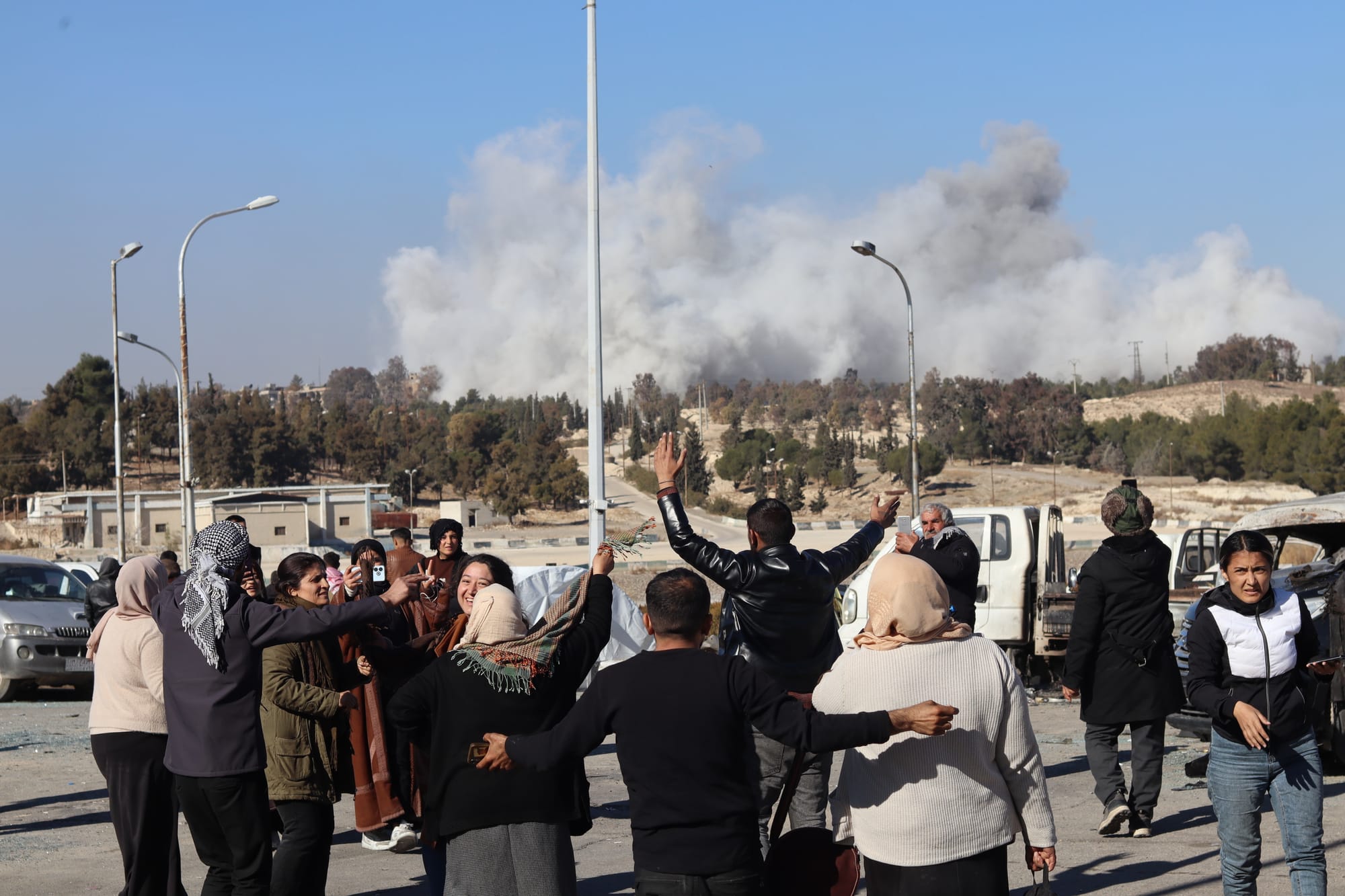Inside Rojava’s resistance against Turkish drone attacks

‘I saw some of my friends die in front of my eyes,’ says Manije, a women’s rights activist from the Kurdish city of Kobane in North East Syria. Manije had been protesting with dozens of other civilians at the Tishreen dam on 16 January when they were hit by a drone strike. ‘I carried the wounded with my own hands,’ she tells me, describing the horrific moments after the bomb hit crowds of singing and dancing protesters.
Since December 2024, the dam, one of the few crossing points over the Euphrates River, has become a focal point for fighting between the Syrian National Army (SNA), a Turkish proxy militia, and the Kurdish-led multi-ethnic Syrian Democratic Forces (SDF).
In a bid to deter further attacks on the dam, which supplies water and power to hundreds of thousands of people in northern Syria, civilian convoys have been travelling to the site each day to provide a protective presence.
The movement began as a popular initiative by people living in the Autonomous Area of North and East Syria (AANES), also known as Rojava, a region that has faced repeated attacks and invasions from the SNA and Turkey.
Fund journalism that sparks change.
Donate now!Taking it in turns to travel to the dam, protesters from different town and communities – including Arabs, Kurds, Armenians and Assyrians – have staged sit-ins, dances, cultural performances and speeches on top and around the site to prevent further attacks. The protest attracts people of various ages and backgrounds, such as 67-year-old beloved Kurdish comedian Bave Teyar, football coach Kefo Osman and Roniza Mohammed, a young university student. All three were killed by drone strikes on the dam.

Since the mobilizations began on 8 January, 24 people have been killed in total and 221 injured by Turkish drone strikes, according to local health authorities in Rojava.
In another incident on 18 January, a drone targeted an ambulance transporting civilians who had been injured during another strike earlier that morning. The attacks that day killed six people and injured 16. Human Rights Watch has described the targeting of the Kurdish Red Crescent ambulance as a ‘possible war crime’.
‘Turkey attacked peacefully protesting civilians,’ says Manije. ‘This should be against international law. Why doesn’t the world speak up?’ Turkish officials claim the attacks have been on military and ‘terrorist’ targets.
The bombings have already caused cracks to the wall of the dam, which has not been functional since early December, depriving some of the surrounding cities including Kobane of water and electricity. Protesters also fear further attacks could cause the dam to collapse, releasing huge flood waters.
The movement to protect the strategic Tishreen dam comes as the SNA escalates its attacks elsewhere in AANES, forcing the SDF out of Manbij and Tel Rifaat. The SDF has accused Turkey and its proxies of exploiting the security vacuum following the fall of former Syrian President Bashar al-Assad in December to push into the region. The future of the AANES, known for its unique ideology based on direct democracy and women’s autonomy, is now in jeopardy.
Mazloum Abdi, SDF commander-in-chief, warns that the SNA’s offensive poses a threat to Syria’s wider stability. ‘These attacks contradict and hinder both domestic and international efforts to resolve the Syrian crisis,’ he said.
Despite the deadly airstrikes, local protesters are determined to continue providing a protective presence at the dam. Rudeen Khalef, a protest organizer, says: ‘We are here to defend our land and to stop Turkish attacks. We will keep resisting.’
— Viktoria Matejova in Rojava
📰 Read more about Turkey's increasing use of violence in northeastern Syria in our latest issue - free to read for Currents subscribers (page 56)
👉 Follow Jenni Keasden for more on-the-ground updates from Rojava
✊ Get involved with the Kurdistan Solidarity Network and the Rojava Information Centre
📆 Attend a free online event on Kurdish perspectives on Syrian foreign policy, hosted by the British International Studies Association on 28 February
Like what you've read? Support us with a tip.
Are you a freelancer? Pitch us a story.
Looking for more? Listen to our podcast The World Unspun
Shop a wide range of ethical goods at our very own Ethical Shop
Subscribe to New Internationalist magazine and get Currents absolutely free!

